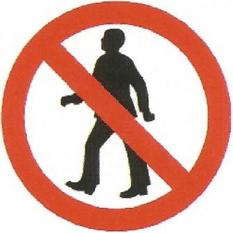Communication of Safeguards for Ice (/Snow) Slips and Falls
It can be vital that everyone knows what hazards are present and what additional safeguards are required. It is also important to ensure feedback from staff about new/ changing hazards. Two-way communication is important.
Consider smart signs that detect and warn of changing conditions, such as low-temperatures
Ensure people know
- That employees should take care of themselves and others, co-operate and report dangers under the 2005 Act
- What weather warnings have been issued
- What additional precautions they must take, e.g. dynamic risk assessment
- What areas are off-limits
- What additional equipment they must use
- What additional precautions are required to ensure visitors to the site are protected
- That they must report and take precautions to deal with hazards seen
- How hazards should be reported to management

Signs
- Signs should only be used where hazards cannot be avoided or adequately reduced
- Cordon off a safe pedestrian walkway and signs may be used as a part of the cordon system
- Remove warning signs when they no longer apply (2.2 of Part B of Schedule 9 of the General Application Regulations)
"Physiotherapist awarded €1m after slip on icy steps" (January 2014) - "Three yellow 'wet floor' caution signs were also placed on one side of the steps"
Ice slips can be an important part of Slip Risk Assessment and Prevention
A risk assessment approach to ice slips and falls should consider
- Weather
- Activities
- Locations
- Communication
- Sample Dynamic Risk Assessment
